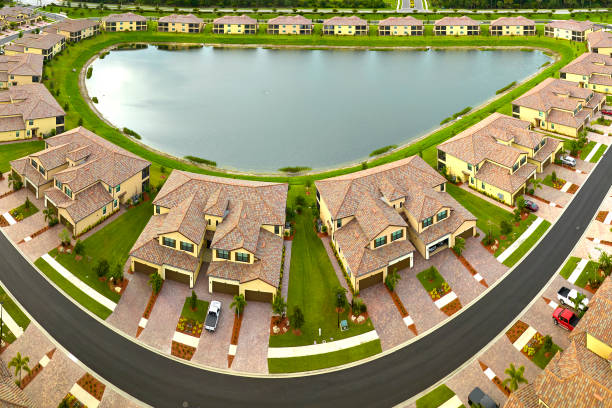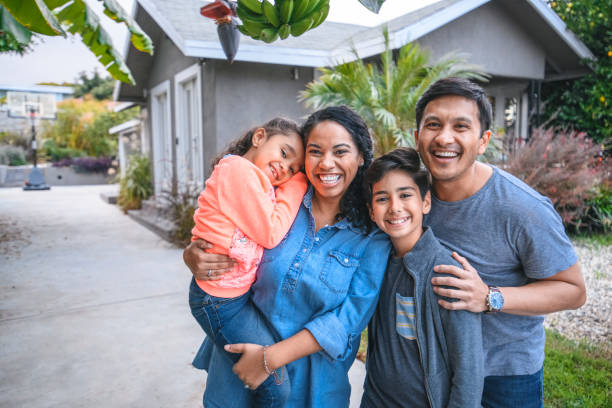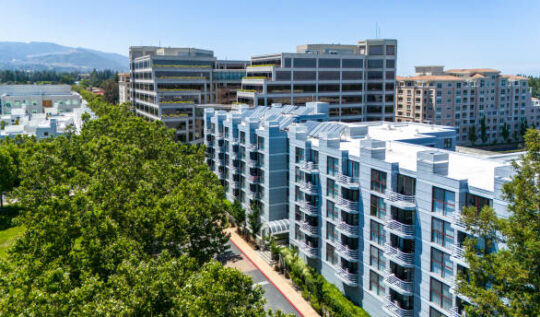10 Homes Approved Ministerially: SB 684 and SB 1123 Explained
California is in a housing crisis. Families across the state struggle to find affordable homes close to work, school, or transit. State lawmakers have passed dozens of bills over the past decade, but local zoning and approval processes still slow down new housing.
Table of Contents
ToggleThat’s where SB 684 and SB 1123 come in. These two laws create a faster path to approval for small housing developments—specifically, projects with up to 10 homes on eligible lots. What makes them different is their use of ministerial approval. This process allows developers to skip lengthy public hearings, environmental reviews, and discretionary planning delays.
By reducing red tape, SB 684 and SB 1123 aim to unlock thousands of infill sites across California—especially in urban areas and vacant single-family zones. This means more homes built faster, with fewer costs and delays. These projects often result in “starter homes,” naturally smaller and more affordable by design.
In this article, we’ll break down both laws, explain how they work, and help you understand where and how you can build under these rules. Whether you’re a developer, a city planner, or a homeowner looking to subdivide, this guide will walk you through the essentials of 10-home ministerial approval in California.
Background: The Starter Home Revitalization Act framework
To fully understand SB 684 and SB 1123, you need to know the policy behind them. Both laws build on the idea that small housing projects—especially those under 10 units—shouldn’t face the same approval burdens as massive developments. This thinking led to what many call the “Starter Home Revitalization Act” framework.
California has thousands of small, oddly shaped, or vacant lots sitting unused. These parcels could support compact homes or small subdivisions, but strict zoning and review requirements have made development almost impossible. In response, lawmakers designed a legal framework to fast-track these modest projects.

This framework supports:
Infill development on underused land
Starter homes and entry-level ownership
Middle housing that fits better into existing neighborhoods
The framework’s core idea is that cities should not block small projects that follow objective rules. As long as developers meet clear zoning standards—like setbacks, height, and parcel size—they should get fast-track approval.
This is where ministerial approval comes in.
What is ministerial approval?
Ministerial approval means the government must approve your project if it meets all required standards—no public hearings, no environmental impact reports, and no political delay.
It’s different from discretionary approval, where cities have wide latitude to deny or condition a project based on public input or vague policies.
Under SB 684 and SB 1123, qualifying housing developments:
Get automatic approval if they follow objective zoning standards
Are exempt from CEQA (California Environmental Quality Act)
Do not require public hearings, appeals, or council votes
This creates a clear and predictable path for small-scale developers. It also reduces costs and timelines—key barriers to building starter homes.
Projects under these laws still need to meet health and safety codes. But if a developer’s plan fits the rules, cities can’t say no.
This kind of streamlining is essential in places like Los Angeles, San Diego, or Oakland, where traditional entitlement can take years.
Deep Dive: SB 684 Explained
SB 684, signed into law in 2023 and effective as of July 1, 2024, is a powerful new tool for small-scale housing developers. It allows for ministerial approval of up to 10 homes on qualifying multifamily lots. The bill was designed to unlock urban land that has long been overlooked due to outdated zoning and lengthy approval timelines.
Let’s break down exactly how it works—and who can use it.
Eligible lots and locations under SB 684
Not every property qualifies for this streamlined path. SB 684 focuses on infill development in urban areas, specifically in zones that already allow multifamily housing.
To qualify:
The property must be zoned for multifamily use
It must be located within an urbanized area or urban cluster
The total lot size must be 5 acres or less
It cannot be subdivided more than once using SB 684
This means you can’t use SB 684 to repeatedly split the same lot over time. It’s intended for single-round subdivision, encouraging new housing without overloading infrastructure.
The law also excludes sensitive or protected lands, such as:
Agricultural or farmland
Wetlands or habitat areas
High fire-severity zones
Sites with hazardous materials
These restrictions help balance fast-track housing with environmental safety.
Subdivision and unit limits: How many homes can you build?
SB 684 allows a developer to split an eligible lot into up to 10 parcels, each of which can be sold or developed individually. Each parcel must be at least 600 square feet in size.
This is not a loophole for dense apartment blocks. Instead, the law targets small-scale, ground-up construction, such as:
Detached starter homes
Small duplexes or cottages
Fee-simple rowhouses or townhomes
The 10-home cap keeps projects small and neighborhood-scale. This aligns with the bill’s goal: to encourage modest developments that meet local character while adding housing supply.
Unit size and design rules under SB 684
To ensure affordability, SB 684 includes a size cap on homes built through the program. The average unit size cannot exceed 1,750 square feet of net habitable space.
This doesn’t mean every home must be tiny. You can build a mix of units—as long as the average size stays below the limit.
For example:
Four 1,200-sq-ft units
Four 1,800-sq-ft units
Two 2,100-sq-ft units
Together, the average must still be ≤ 1,750 sq ft.
Design rules under SB 684 are based on objective standards, meaning:
Cities can’t impose subjective design reviews
Projects must follow existing zoning rules on height, setbacks, and lot coverage
Local agencies must approve the subdivision if it meets all legal standards
This reduces uncertainty and keeps the process transparent for developers.
Timeline: 60-day approval and early building permits
Speed is a key feature of SB 684. Once a complete application is submitted:
The city must approve or deny the tentative map within 60 days
If approved, the city must issue building permits for compliant units—no extra delays
In some cities, housing approvals can take 12–24 months. With SB 684, it can take as little as 2–3 months, depending on how fast you move through plan check.

In addition:
Cities cannot hold public hearings or appeals
The approval cannot be overturned by city council or neighborhood opposition
The subdivision is final unless the project violates objective codes
This “as-of-right” approach protects small developers from NIMBY pressure and bureaucratic slowdowns.
⏱️ SB 684 Approval Timeline: 60 Days to Yes
Site Eligibility Review
Submit Tentative Parcel Map
City Review (60-Day Clock)
Ministerial Approval
Final Map + Permits
CEQA exemption and streamlined review
Perhaps the most important benefit: projects approved under SB 684 are exempt from CEQA. That means:
No negative declarations
No risk of CEQA lawsuits delaying construction
This is critical in dense, urban communities where CEQA lawsuits have become a major barrier to new housing—even on parking lots or underused land.
With CEQA removed from the equation, SB 684 gives developers certainty and speed.
Expanding Scope: Why SB 1123 Matters
SB 1123 builds on SB 684, but takes the idea even further. While SB 684 focused on multifamily-zoned parcels, SB 1123 allows small-scale housing on vacant lots in single-family zones. That’s a huge deal. It opens access to thousands of empty or underused lots across California’s suburbs and older neighborhoods.
This law officially goes into effect on July 1, 2025, giving cities time to update their local ordinances. But developers and planners should start preparing now.
SB 1123 summary: What it does and who it helps
SB 1123 removes a long-standing barrier: in many cities, single-family zones block even modest new homes. This bill allows up to 10 homes on a vacant lot in a single-family zone, as long as the site meets strict standards.
Key highlights:
Allows subdivision of a vacant single-family lot (≤1.5 acres)
Enables ministerial approval—no hearings, no CEQA, no appeals
Applies objective design standards only (e.g., setbacks, height)
Encourages starter home development in established neighborhoods
It’s a quiet revolution. While it doesn’t eliminate single-family zoning, it gives developers a way to legally build more homes on underused land—especially in older areas with aging infrastructure.
Single-family zones and “vacant” definitions under SB 1123
SB 1123 only applies to vacant properties. That’s an important distinction. You can’t use this law to tear down homes or redevelop occupied parcels.
To qualify:
The site must be zoned for single-family residential use
It must be vacant for at least 3 years (or longer if a local ordinance applies)
The total lot size must be 1.5 acres or smaller
The site cannot include any protected housing units, such as:
Rent-controlled units
Affordable housing
Units occupied by tenants within the last 7 years
This protects renters and ensures the law isn’t used to displace people or demolish existing homes.
For example: If a vacant lot in a suburban neighborhood has sat empty since 2018, and meets all local zoning, a developer could divide it into 6–10 smaller parcels—and build detached homes or cottages on each.
Updated density and frontage rules
One of SB 1123’s biggest innovations is how it handles density and street frontage—two rules that often block new development in residential areas.
Key features:
Minimum density requirement: Projects must use at least 66% of the density allowed under the General Plan or Housing Element
No frontage requirement: Local governments cannot require street frontage for each lot (a major barrier in traditional zoning)
Height limits must be objective: Cities cannot impose height caps lower than the standard applied to comparable single-family homes
Let’s say a city allows 8 units per acre in its General Plan. To qualify under SB 1123, your project must include at least 5–6 units per acre—ensuring you’re not under-building the site.
This approach makes sure developers use land efficiently, while still respecting neighborhood scale.
Ownership structures and ADU rules under SB 1123
SB 1123 also offers more flexibility in ownership models, making it easier to sell or finance new homes.
Eligible ownership types include:
Fee simple lots (traditional detached homes)
Condominiums
Tenancy in common (TIC)
Community land trusts or cooperatives
This allows for a range of housing models—from for-sale homes to community-run housing.
One of the most developer-friendly provisions: ADUs and JADUs (junior units) are allowed on each lot, and do not count toward the 10-home cap.
For example:
A 10-lot project could legally include 10 primary homes + 10 ADUs
That’s 20 total housing units, approved ministerially
This offers a major incentive for developers to include rental units or multigenerational housing without extra entitlement hurdles.
Summary: How SB 1123 expands the “10-home” playbook
SB 1123 takes the ministerial approval pathway from urban multifamily zones and extends it into low-density, vacant single-family neighborhoods—where housing supply is most constrained.
By removing street frontage limits, CEQA delays, and subjective reviews, the law makes it possible to build small-scale housing that meets real demand.
Side-by-Side: SB 684 vs SB 1123 Comparison
Both SB 684 and SB 1123 offer a faster way to build up to 10 homes with ministerial approval in California. But they apply to different kinds of properties and have unique rules. This section gives you a direct comparison, so you can quickly understand where and how each law works.
Key differences between SB 684 and SB 1123
| Feature | SB 684 | SB 1123 |
|---|---|---|
| Effective Date | July 1, 2024 | July 1, 2025 |
| Zoning Allowed | Multifamily only | Single-family and multifamily (if vacant) |
| Lot Type | Urban infill parcels | Vacant residential lots (≤1.5 acres) |
| Lot Size Limit | Up to 5 acres | Up to 1.5 acres |
| Parcel Size Min. | 600 sq ft | 1,200 sq ft (if in single-family zones) |
| Max Homes Approved | 10 total (primary units + ADUs count toward cap) | 10 primary units + unlimited ADUs/JADUs |
| Average Unit Size Cap | ≤1,750 sq ft per unit (net habitable space) | No size limit defined |
| Ownership Models Allowed | Fee simple, condo, co-op, CLT | + Tenancy in common (TIC) allowed |
| Street Frontage Requirement | Local rules may apply | Cities cannot require frontage |
| CEQA Exempt? | Yes | Yes |
| Discretionary Review Allowed? | No – must be ministerial | No – must be ministerial |
| Height & Design Rules | Must follow objective zoning standards | Must follow objective standards; height caps limited |
| Protected Sites Excluded? | Yes | Yes |
Key Implementation Details and Legal Constraints
While these laws aim to simplify housing approvals, they come with several technical restrictions that developers, planners, and homeowners must understand. Let’s break them down:
Environmental exclusions and sensitive site restrictions
Both SB 684 and SB 1123 exclude development on environmentally sensitive land. If your project falls into one of these categories, it likely won’t qualify:
Farmland or land under a Williamson Act contract
Wetlands or areas with protected wildlife species
High fire-severity zones
Sites with known hazardous materials
Floodways or flood hazard zones (unless mitigated)
Even though these bills waive CEQA for eligible sites, California’s environmental protections still apply to sensitive locations.
Tenant protections and demolition limits
These laws are designed to encourage new housing, not to promote displacement. So both SB 684 and SB 1123 include strong tenant protection rules:
You cannot demolish or replace any housing that was:
Rented in the last 7 years
Subject to rent control
Designated as affordable housing
If the site has any tenant history, it’s ineligible—even if the units are currently vacant
This ensures that new housing supply doesn’t come at the expense of vulnerable renters or affordable stock.
Objective zoning standards only
Cities can still apply rules to these projects—but only if those rules are objective and measurable. Subjective design review is not allowed.
What cities can require:
Front yard and side yard setbacks
Height limits based on zoning (but not more restrictive than normal)
Parking minimums (within reason)
Lot coverage and FAR (floor-area ratio) rules
Infrastructure connection fees
What cities cannot do:
Deny a project for “not fitting neighborhood character”
Require a design review board hearing
Impose vague or discretionary aesthetic standards
This forces local governments to stick to clear, written standards, which removes delays and uncertainty.
Side-by-Side: Comparing SB 684 and SB 1123 for 10-Home Ministerial Projects
SB 684 and SB 1123 work together—but they target different types of land. If you’re considering a 10-home project in California, it’s important to know which law applies to your site and how their rules differ.
The table below breaks down the key differences and shared features of these two laws.
SB 684 vs SB 1123: At a Glance
| Feature | SB 684 | SB 1123 |
|---|---|---|
| Effective Date | July 1, 2024 | July 1, 2025 |
| Eligible Zones | Multifamily zones | Vacant single-family residential zones |
| Maximum Lot Size | 5 acres | 1.5 acres |
| Minimum Parcel Size | 600 sq ft | 1,200 sq ft |
| Density Requirement | Must allow 10 parcels under zoning or Housing Element | At least 66% of General Plan density |
| Vacancy Requirement | Not required | Must be vacant with no tenant in last 7 years |
| Ownership Types Allowed | Fee simple, condo, co-op, community land trust | All of SB 684 + tenancy in common (TIC) |
| ADUs and JADUs | Optional; count toward 10-home cap | Allowed; do not count toward 10-home cap |
| Ministerial Approval | Yes | Yes |
| CEQA Exemption | Yes | Yes |
Key Takeaways from the Comparison
SB 684 is best for urban sites zoned for multifamily housing—even small ones.
SB 1123 opens the door to building on vacant single-family lots, a major expansion of infill housing potential.
Both laws cut out CEQA delays and discretionary review, making small housing projects faster and cheaper.
SB 1123 is more restrictive on tenant history but more flexible with ADUs and shared ownership models.
If your site doesn’t qualify under one law, it might qualify under the other. Many developers will use both to build small, affordable homes across multiple site types.
Real-World Impact: What’s Happening on the Ground
SB 684 and SB 1123 aren’t just policy ideas—they’re already shaping how housing gets built across California. Cities, developers, and community leaders are testing these laws and exploring how they can speed up infill housing without major battles.

Let’s look at how these laws are beginning to work in real time.
Developer interest and early municipal adoption
Since SB 684 went into effect in July 2024, developers across California have shown strong interest in using the law—especially in Los Angeles County, Santa Clara, and parts of the Inland Empire. Many developers are focusing on underutilized multifamily lots near transit or in older commercial corridors.
Some cities are taking the lead by actively encouraging 10-home ministerial subdivisions. Examples include:
Hawthorne: Released a detailed SB 684 application checklist and site map
Cudahy: Amended zoning to align with SB 684 objectives
Rosemead: Created pre-approved parceling templates to reduce processing time
Cities that embrace the law are seeing faster permitting and more interest from small to mid-size builders who had previously avoided infill projects due to delays and uncertainty.
Meanwhile, cities that haven’t adopted internal procedures yet are creating confusion. Some applicants report inconsistent interpretations or long wait times—despite the 60-day approval clock in the law.
Permitting speed and financial impact for builders
One of the biggest benefits of SB 684 is time. By skipping CEQA and avoiding discretionary review, developers can save 6 to 18 months on the approval timeline.
That matters. Every month of delay increases carrying costs and financing risk. Faster approval means:
Lower pre-construction costs
More certainty for lenders and investors
Reduced soft costs like legal fees, environmental studies, and design revisions
Some cities have also begun coordinating SB 684 with SB 937, which allows cities to defer impact fees until after units are built or sold. This provides huge cash flow advantages for smaller developers without deep capital reserves.
On a 10-home project, total savings could range from $150,000 to $400,000, depending on location, permitting fees, and whether ADUs are included.
Starter home production and gentle density
The biggest potential win? More starter homes built where people already live—without needing massive upzoning or disruptive towers.
These laws encourage what planners call “gentle density”: adding a small number of units to neighborhoods without changing their character. Think:
Cottages in a cul-de-sac
Rowhomes near a commercial strip
Clustered bungalows on an empty corner lot
These homes often fall into the “naturally affordable” category—smaller by design, with lower prices than larger market-rate units.
Analysts project that SB 684 alone could enable 8,000 to 15,000 new homes statewide per year, especially in coastal regions where zoning is tight and land is expensive.
SB 1123, when it goes into effect in 2025, could double that number by unlocking vacant single-family lots across suburban areas—sites that were nearly impossible to build on until now.
Strategic Guidance for Stakeholders: How to Use SB 684 and SB 1123 Effectively
SB 684 and SB 1123 offer powerful new tools—but success depends on knowing how to navigate them. Whether you’re a developer, city planner, homeowner, or community group, understanding the rules and timelines will help you move faster and avoid setbacks.
Below is guidance tailored for each stakeholder group.
For Developers and Builders: How to unlock small-lot housing now
If you’re a builder interested in 10-home infill projects, here’s how to get started:
1. Identify eligible sites early
Look for lots that are:
Zoned multifamily (SB 684) or vacant single-family (SB 1123)
Under the acreage limits (5 acres for SB 684, 1.5 for SB 1123)
Free of environmental constraints or recent tenant activity
Use public GIS tools and zoning maps to screen properties quickly.
2. Prepare clean, compliant site plans
Ministerial approval only works if your plans:
Meet all objective zoning standards
Follow setback, height, and parking rules
Include clear parcel boundaries and access points
Cities cannot deny you if your plans meet the law—but they can delay you if documents are incomplete.
3. Consider alternative ownership models
If traditional fee-simple sales don’t pencil out, look into:
Tenancy in common (TIC)
Condominium mapping
Community land trusts
These options give flexibility in financing and long-term use.
4. Take advantage of fee deferrals and layered incentives
Combine SB 684/SB 1123 with:
SB 937 (fee deferral)
SB 450 (objective design standards)
SB 1211 (ADU exemptions)
This approach can improve project cash flow and lower risk.
For Planning Staff and Local Governments: How to implement the laws responsibly

Cities are required to process these applications—but many haven’t built internal systems yet. Here’s what local governments should prioritize:
1. Adopt clear administrative procedures
Cities must publish:
Checklists
Application forms
Parcel qualification tools
Standardizing the process protects staff from legal challenges and improves developer compliance.
2. Train staff and update zoning interpretations
Code enforcement, planning, and building officials should:
Understand the difference between discretionary and ministerial review
Avoid applying subjective design reviews to qualifying projects
Know when CEQA does or does not apply
3. Track project volume and identify common roadblocks
Cities should monitor:
How many SB 684/SB 1123 projects are filed
How long approvals take
What issues slow the process down
This helps build trust with both developers and community members.
For Homeowners and Community Advocates: What this means for your neighborhood
If you’re a homeowner or housing advocate, these laws give you a way to support small-scale housing without major disruption to your community.
What you can do:
Identify vacant lots in your neighborhood that could be developed
Encourage your city to adopt SB 684/SB 1123 procedures quickly
Talk with small builders or nonprofit developers about infill partnerships
Support gentle density in neighborhood meetings and planning sessions
These homes aren’t luxury condos or high-rise towers. They’re often duplexes, bungalows, or cottages—ideal for seniors, young families, or first-time buyers.
Challenges, Risks, and Open Issues with SB 684 and SB 1123
While SB 684 and SB 1123 open exciting opportunities for small-scale housing, they are not without friction. Developers and cities face legal, political, and practical hurdles in putting these laws into action.
Understanding these risks can help you plan smarter and avoid missteps.
Municipal resistance and ordinance delays
Even though SB 684 is already in effect (and SB 1123 starts July 2025), many cities have been slow to adapt.
Common issues include:
No published procedures for ministerial applications
Staff still using discretionary review standards
Confusion about objective vs subjective design rules
Local policies that still contradict state law
Some cities may resist implementation outright. Others may try to delay projects with vague requirements or excessive plan check requests.
Tip: If you’re a developer, cite the law in writing, track deadlines (like the 60-day rule), and escalate if necessary.
Litigation risk and legal uncertainty
Because these laws override local control, legal challenges are likely. Possible issues include:
Cities being sued for denying eligible projects
Neighbors filing lawsuits over CEQA exemptions
Disputes over density calculations or tenant status
Most legal experts expect state law to prevail, but lawsuits can still cause delays.
Also, many terms in the bills—like “vacant” or “objective standards”—can be interpreted differently. Until courts clarify them, gray areas remain.
Design compatibility and infrastructure concerns
Some cities worry these projects may not fit neighborhood aesthetics or strain infrastructure.
Key concerns include:
Lack of uniform design (no subjective reviews allowed)
Increased need for sewer, water, or stormwater upgrades
Parcel access on flag lots or mid-block sites
No street frontage requirements under SB 1123
While the laws preserve safety standards, cities may feel they lack tools to manage growth effectively.
Equity and displacement concerns
Even with tenant protections, some advocates worry that:
These laws could indirectly gentrify low-income areas
Developers may use legal loopholes to displace tenants
New homes may still be out of reach for working families
On the other hand, supporters argue that starter homes are critical for young families, seniors, and essential workers priced out of large-lot housing.
To ensure equitable outcomes, cities and builders should:
Explore community land trusts and shared equity models
Keep ADU rents affordable
Focus on high-opportunity zones, not just gentrifying areas
Conclusion: A New Era for Small-Scale Housing in California
California needs more homes—and fast. SB 684 and SB 1123 offer a practical path forward. Instead of waiting years for approvals, developers can now build up to 10 homes ministerially on small, urban lots and even vacant single-family parcels.
These laws:
Cut through red tape
Eliminate CEQA reviews
Remove the politics from housing approvals
For developers, that means less risk and more predictability. For cities, it means a steady flow of new homes in walkable, transit-rich areas. And for families, it means a new supply of starter homes, duplexes, and cottages—often naturally affordable by design.
But success depends on education, action, and oversight. Builders must follow objective rules. Cities must adopt clear procedures. And advocates must ensure equity is part of every project.
California’s housing crisis won’t be solved by one law. But this is a step in the right direction.

Ready to explore small-lot development under SB 684 or SB 1123?
Our experienced land use consultants at JDJ Consulting Group are here to help you understand California’s changing housing laws. Whether you’re a developer seeking streamlined approvals or a property owner exploring subdivision options, we’ll guide you through every step—from site eligibility to ministerial mapping strategies.
Call us at +1 (818) 827-6243 or contact us online to schedule a FREE consultation and take the next step toward building smarter, faster, and within the law.
FAQs About SB 684 and SB 1123
What is ministerial approval in California housing?
Ministerial approval means a city must approve a project if it meets objective standards. There are no public hearings, no CEQA review, and no political discretion. It’s faster and more predictable than discretionary approval.
How many homes can be approved under SB 684 and SB 1123?
Up to 10 homes can be approved ministerially per project. Under SB 684, ADUs count toward that cap. Under SB 1123, ADUs and JADUs do not count toward the 10-home limit.
Can I use SB 684 on a lot in a single-family zone?
No. SB 684 only applies to multifamily-zoned lots. If your lot is zoned single-family and is vacant, you may be able to use SB 1123, starting July 1, 2025.
What are the size limits for homes built under these laws?
SB 684 requires the average home size to be ≤ 1,750 sq ft (net habitable space). SB 1123 has minimum parcel sizes of 1,200 sq ft, but no unit size cap.
Do these laws override local zoning codes?
No, they do not override zoning. But they do limit local discretion. As long as a project meets written zoning standards, cities must approve it ministerially.
Are CEQA and public hearings required?
No. Both laws exempt eligible projects from CEQA and do not allow public hearings or appeals. This keeps the approval process short and focused.
📊 SB 684 vs SB 1123: Quick Comparison
SB 684
- Applies to multifamily zones
- Lot size up to 5 acres
- CEQA-exempt, no hearings
- Average unit ≤ 1,750 sq ft
- Effective July 1, 2024
SB 1123
- Applies to vacant SF lots
- Lot size up to 1.5 acres
- No CEQA or public input
- ADUs don’t count toward 10 homes
- Effective July 1, 2025






How SB 35 Speeds Up Development in California | JDJ Consulting
July 21, 2025
[…] your project qualifies for SB 35, it becomes ministerial. That’s a legal term, but in simple words, it means the city can’t say “no” if your plans […]